LTM9011IY-14#PBF Analog to Digital Converter: A Comprehensive Product Overview
Linear Technology/Analog Devices
14 Bit ADC LTM9011 1.8V 140-BFBGA
Unit Price: $329.572519
Ext Price: $329.57









14 Bit ADC LTM9011 1.8V 140-BFBGA
The LTM9011IY-14#PBF is a high-performance Analog to Digital Converter (ADC) designed by Linear Technology/Analog Devices. This article provides a detailed analysis of the features, applications, reference designs, alternative parts, and FAQs related to this advanced ADC.
Product Introduction
Description:
The LTM9011IY-14#PBF is a 14-bit Analog to Digital Converter (ADC) with a simultaneous sampling feature. It is designed for high-speed data acquisition applications that require precision and accuracy in converting analog signals into digital data. The ADC operates with a sampling rate of 125 MHz and supports differential input signals.
Features:
1. Simultaneous Sampling: The ADC can sample multiple input channels simultaneously, allowing for accurate data acquisition in real-time.
2. High Resolution: With 14-bit resolution, the LTM9011IY-14#PBF provides high precision in converting analog signals to digital data.
3. LVDS Data Interface: The ADC supports a LVDS serial data interface for efficient data transmission.
4. Low Power Consumption: The ADC operates at a supply voltage of 1.8V, making it suitable for low-power applications.
5. Small Form Factor: The surface-mount package with 140-BFBGA allows for easy integration into compact electronic systems.
Applications:
Primary Applications:
1. Industrial Automation: The LTM9011IY-14#PBF is ideal for industrial automation systems that require high-speed and accurate data acquisition.
2. Communications: The ADC can be used in communication systems for signal processing and data transmission.
3. Test and Measurement: It is suitable for test and measurement equipment that requires precise analog-to-digital conversion.
Secondary Applications:
1. Medical Imaging: The ADC can be utilized in medical imaging devices for capturing and processing analog signals.
2. Automotive Electronics: It can be integrated into automotive electronics for sensor data acquisition and processing.
Applicable Specific Modules:
The LTM9011IY-14#PBF can be used in data acquisition modules, signal processing modules, and communication modules in various electronic systems.
Reference Designs:
1. Data Acquisition System: A reference design showcasing the use of the LTM9011IY-14#PBF in a high-speed data acquisition system.
2. Signal Processing Module: A reference design demonstrating the integration of the ADC in a signal processing module for industrial applications.
Alternative Parts:
1. LTM9012IY-16#PBF: A similar ADC with 16-bit resolution for applications requiring higher precision.
2. LTM9001IY-12#PBF: An ADC with 12-bit resolution for cost-effective data acquisition solutions.
FAQs:
Q1: What is the maximum sampling rate of the LTM9011IY-14#PBF?
A1: The ADC operates at a maximum sampling rate of 125 MHz.
Q2: Can the ADC be used in low-power applications?
A2: Yes, the LTM9011IY-14#PBF operates at a supply voltage of 1.8V, making it suitable for low-power applications.
Q3: What is the resolution of the ADC?
A3: The ADC has a resolution of 14 bits, providing high precision in analog-to-digital conversion.
In conclusion, the LTM9011IY-14#PBF Analog to Digital Converter offers high performance, precision, and versatility for a wide range of data acquisition applications. Its advanced features and compact design make it a preferred choice for engineers in various industries.
Specifications
- TypeParameter
- Factory Lead Time12 Weeks
- Mounting Type
The "Mounting Type" in electronic components refers to the method used to attach or connect a component to a circuit board or other substrate, such as through-hole, surface-mount, or panel mount.
Surface Mount - Package / Case
refers to the protective housing that encases an electronic component, providing mechanical support, electrical connections, and thermal management.
140-BFBGA - Surface Mount
having leads that are designed to be soldered on the side of a circuit board that the body of the component is mounted on.
YES - Operating Temperature
The operating temperature is the range of ambient temperature within which a power supply, or any other electrical equipment, operate in. This ranges from a minimum operating temperature, to a peak or maximum operating temperature, outside which, the power supply may fail.
-40°C~85°C - Packaging
Semiconductor package is a carrier / shell used to contain and cover one or more semiconductor components or integrated circuits. The material of the shell can be metal, plastic, glass or ceramic.
Tray - Published2011
- JESD-609 Code
The "JESD-609 Code" in electronic components refers to a standardized marking code that indicates the lead-free solder composition and finish of electronic components for compliance with environmental regulations.
e1 - Part Status
Parts can have many statuses as they progress through the configuration, analysis, review, and approval stages.
Active - Moisture Sensitivity Level (MSL)
Moisture Sensitivity Level (MSL) is a standardized rating that indicates the susceptibility of electronic components, particularly semiconductors, to moisture-induced damage during storage and the soldering process, defining the allowable exposure time to ambient conditions before they require special handling or baking to prevent failures
3 (168 Hours) - Number of Terminations140
- ECCN Code
An ECCN (Export Control Classification Number) is an alphanumeric code used by the U.S. Bureau of Industry and Security to identify and categorize electronic components and other dual-use items that may require an export license based on their technical characteristics and potential for military use.
3A991.C.3 - Terminal Finish
Terminal Finish refers to the surface treatment applied to the terminals or leads of electronic components to enhance their performance and longevity. It can improve solderability, corrosion resistance, and overall reliability of the connection in electronic assemblies. Common finishes include nickel, gold, and tin, each possessing distinct properties suitable for various applications. The choice of terminal finish can significantly impact the durability and effectiveness of electronic devices.
Tin/Silver/Copper (Sn/Ag/Cu) - Terminal Position
In electronic components, the term "Terminal Position" refers to the physical location of the connection points on the component where external electrical connections can be made. These connection points, known as terminals, are typically used to attach wires, leads, or other components to the main body of the electronic component. The terminal position is important for ensuring proper connectivity and functionality of the component within a circuit. It is often specified in technical datasheets or component specifications to help designers and engineers understand how to properly integrate the component into their circuit designs.
BOTTOM - Terminal Form
Occurring at or forming the end of a series, succession, or the like; closing; concluding.
BALL - Peak Reflow Temperature (Cel)
Peak Reflow Temperature (Cel) is a parameter that specifies the maximum temperature at which an electronic component can be exposed during the reflow soldering process. Reflow soldering is a common method used to attach electronic components to a circuit board. The Peak Reflow Temperature is crucial because it ensures that the component is not damaged or degraded during the soldering process. Exceeding the specified Peak Reflow Temperature can lead to issues such as component failure, reduced performance, or even permanent damage to the component. It is important for manufacturers and assemblers to adhere to the recommended Peak Reflow Temperature to ensure the reliability and functionality of the electronic components.
NOT SPECIFIED - Number of Functions1
- Supply Voltage
Supply voltage refers to the electrical potential difference provided to an electronic component or circuit. It is crucial for the proper operation of devices, as it powers their functions and determines performance characteristics. The supply voltage must be within specified limits to ensure reliability and prevent damage to components. Different electronic devices have specific supply voltage requirements, which can vary widely depending on their design and intended application.
1.8V - Time@Peak Reflow Temperature-Max (s)
Time@Peak Reflow Temperature-Max (s) refers to the maximum duration that an electronic component can be exposed to the peak reflow temperature during the soldering process, which is crucial for ensuring reliable solder joint formation without damaging the component.
NOT SPECIFIED - Base Part Number
The "Base Part Number" (BPN) in electronic components serves a similar purpose to the "Base Product Number." It refers to the primary identifier for a component that captures the essential characteristics shared by a group of similar components. The BPN provides a fundamental way to reference a family or series of components without specifying all the variations and specific details.
LTM9011 - Pin Count
a count of all of the component leads (or pins)
140 - Qualification Status
An indicator of formal certification of qualifications.
Not Qualified - Configuration
The parameter "Configuration" in electronic components refers to the specific arrangement or setup of the components within a circuit or system. It encompasses how individual elements are interconnected and their physical layout. Configuration can affect the functionality, performance, and efficiency of the electronic system, and may influence factors such as signal flow, impedance, and power distribution. Understanding the configuration is essential for design, troubleshooting, and optimizing electronic devices.
S/H-ADC - Number of Bits14
- Input Type
Input type in electronic components refers to the classification of the signal or data that a component can accept for processing or conversion. It indicates whether the input is analog, digital, or a specific format such as TTL or CMOS. Understanding input type is crucial for ensuring compatibility between different electronic devices and circuits, as it determines how signals are interpreted and interacted with.
Differential - Architecture
In electronic components, the parameter "Architecture" refers to the overall design and structure of the component. It encompasses the arrangement of internal components, the layout of circuitry, and the physical form of the component. The architecture of an electronic component plays a crucial role in determining its functionality, performance, and compatibility with other components in a system. Different architectures can result in variations in power consumption, speed, size, and other key characteristics of the component. Designers often consider the architecture of electronic components carefully to ensure optimal performance and integration within a larger system.
Pipelined - Number of Inputs8
- Converter Type
The parameter "Converter Type" in electronic components refers to the classification of devices that convert one form of energy or signal to another. This includes devices such as analog-to-digital converters (ADCs), digital-to-analog converters (DACs), and various types of signal converters used in communication, power management, and measurement systems. Each converter type is designed to facilitate the manipulation or transformation of signals to meet specific application requirements. The choice of converter type typically depends on factors such as the signal characteristics, required accuracy, and conversion speed.
ADC, PROPRIETARY METHOD - Reference Type
a code object that is not stored directly where it is created, but that acts as a kind of pointer to a value stored elsewhere.
External, Internal - Data Interface
A Data Interface in EDQ is a template of a set of attributes representing a given entity, used to create processes that read from, or write to, interfaces rather than directly from or to sources or targets of data.
LVDS - Serial - Sampling Rate
often described in the context of signal processing as the number of samples per time.
125 MHz - Voltage - Supply, Analog
Voltage - Supply, Analog is a parameter in electronic components that specifies the range of voltage levels required to power the analog circuitry within the component. This parameter indicates the minimum and maximum voltage levels that the component can accept for proper operation of its analog functions. It is crucial to ensure that the voltage supplied to the component falls within this specified range to prevent damage and ensure optimal performance. Understanding and adhering to the "Voltage - Supply, Analog" parameter is essential for the proper functioning of analog circuits in electronic components.
1.7V~1.9V - Voltage - Supply, Digital
Voltage - Supply, Digital is a parameter that specifies the voltage level required to power the digital circuitry within an electronic component, such as an integrated circuit or a microcontroller. This parameter is crucial for ensuring proper operation of the digital components, as supplying the correct voltage level is essential for reliable performance. The specified voltage range typically includes both minimum and maximum values within which the component can operate safely and efficiently. It is important to adhere to the recommended voltage supply range to prevent damage to the component and to maintain the integrity of the digital signals being processed.
1.7V~1.9V - Number of Analog In Channels8
- Sampling Rate (Per Second)
The sampling rate (per second) in electronic components refers to the frequency at which an analog signal is measured or sampled to convert it into a digital signal. It is typically expressed in Hertz (Hz) and indicates how many times per second the analog signal is sampled. A higher sampling rate allows for better representation of the original signal, capturing more detail and reducing distortion during the conversion process. In audio applications, for example, common sampling rates include 44.1 kHz for CD-quality audio and 48 kHz for video production.
125M - Output Bit Code
Output Bit Code refers to the digital representation of the output signal of an electronic component, typically in binary form. It indicates the specific combination of bits that represent the output value of the component. The output bit code is crucial for interpreting and processing the output data accurately in digital systems. By understanding the output bit code, engineers can design appropriate circuits and algorithms to manipulate and utilize the output information effectively.
OFFSET BINARY, 2'S COMPLEMENT BINARY - Linearity Error-Max (EL)
Linearity Error-Max (EL) is a parameter used to quantify the deviation of a device's output from a straight line response over its specified input range. It measures the maximum difference between the ideal output and the actual output of the component when subjected to varying input levels. A smaller linearity error indicates better performance, as it signifies more accurate and consistent output behavior across the input spectrum. This parameter is critical in applications requiring precision, such as analog-to-digital converters and other signal processing components.
0.025% - Sample and Hold / Track and Hold
"Sample and Hold" and "Track and Hold" are two related functions commonly found in electronic components such as analog-to-digital converters (ADCs) and signal processing circuits. In a Sample and Hold circuit, the input signal is sampled at specific intervals and held constant until the next sampling period. This allows the circuit to capture and store the input signal's value for further processing or conversion.On the other hand, a Track and Hold circuit continuously tracks the input signal's value and holds it steady when required, typically during the conversion process. This ensures that the input signal remains constant and accurate during the conversion process.Both functions are essential in maintaining the integrity and accuracy of analog signals in digital systems, allowing for precise measurements and processing of signals in various electronic applications.
SAMPLE - Ratio - S/H:ADC
The parameter "Ratio - S/H:ADC" in electronic components refers to the ratio between the sample and hold (S/H) circuit and the analog-to-digital converter (ADC) in a system. The sample and hold circuit is responsible for capturing and holding the input signal at a specific moment in time, while the ADC converts this analog signal into a digital format for processing. The ratio between the S/H and ADC components is important as it determines the accuracy and speed of the analog-to-digital conversion process. A higher ratio typically indicates a more precise and efficient conversion process, leading to better overall performance of the electronic system. Engineers often consider this parameter when designing and optimizing electronic circuits to ensure reliable and high-quality signal processing.
1:1 - Analog Input Voltage-Max
Analog Input Voltage-Max refers to the maximum voltage level that can be safely applied to the input of an electronic component, such as an integrated circuit or sensor, without causing damage. This parameter is crucial for ensuring the proper functioning and longevity of the component. Exceeding the specified maximum input voltage can lead to overloading, overheating, or even permanent damage to the component. It is important for designers and engineers to carefully consider and adhere to this parameter when designing circuits or systems to prevent potential failures and ensure reliable operation.
2V - Output Format
Output formats are used to determine which data is exported and how data is displayed in many areas of OLIB.
SERIAL, PARALLEL, WORD - Analog Input Voltage-Min
Analog Input Voltage-Min refers to the minimum voltage level that an electronic component or device can accept as an input signal in analog form. This parameter is crucial for ensuring proper functionality and performance of the component, as providing a voltage below this minimum level may result in inaccurate readings, errors, or even damage to the device. Designers and engineers need to consider this specification when designing circuits or systems to ensure that the input voltage provided falls within the acceptable range for reliable operation. It is important to adhere to the specified minimum input voltage to prevent any potential issues and maintain the integrity of the electronic component.
-2V - Features
In the context of electronic components, the term "Features" typically refers to the specific characteristics or functionalities that a particular component offers. These features can vary depending on the type of component and its intended use. For example, a microcontroller may have features such as built-in memory, analog-to-digital converters, and communication interfaces like UART or SPI.When evaluating electronic components, understanding their features is crucial in determining whether they meet the requirements of a particular project or application. Engineers and designers often look at features such as operating voltage, speed, power consumption, and communication protocols to ensure compatibility and optimal performance.In summary, the "Features" parameter in electronic components describes the unique attributes and capabilities that differentiate one component from another, helping users make informed decisions when selecting components for their electronic designs.
Simultaneous Sampling - Length11.25mm
- Width9mm
- RoHS Status
RoHS means “Restriction of Certain Hazardous Substances” in the “Hazardous Substances Directive” in electrical and electronic equipment.
ROHS3 Compliant
Parts with Similar Specs
Datasheet PDF
- Datasheets :
![Arduino Micro microcontroller:Datasheet, Features, Applications[FAQs]](https://res.utmel.com/Images/Article/f79ca8c5-8312-4d43-902e-814e3493e6e2.png) Arduino Micro microcontroller:Datasheet, Features, Applications[FAQs]
Arduino Micro microcontroller:Datasheet, Features, Applications[FAQs]06 October 20232618
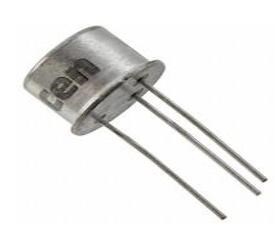 2N2219 NPN Transistor: Datasheet, Equivalent and Pinout
2N2219 NPN Transistor: Datasheet, Equivalent and Pinout21 July 20254299
 dsPIC33FJ128GP206: High-Performance Digital Signal Controller Overview
dsPIC33FJ128GP206: High-Performance Digital Signal Controller Overview28 February 202477
![NE555 VS TLC555[Video] Comparison the differences between them.](https://res.utmel.com/Images/Article/cfe1f243-e88e-4d21-a827-80df4dfc394f.png) NE555 VS TLC555[Video] Comparison the differences between them.
NE555 VS TLC555[Video] Comparison the differences between them.25 April 20228138
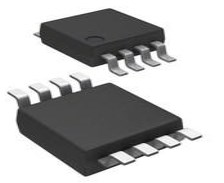 MCP9808 Temperature Sensor: Datasheet, Pinout and Schematic
MCP9808 Temperature Sensor: Datasheet, Pinout and Schematic20 August 20213667
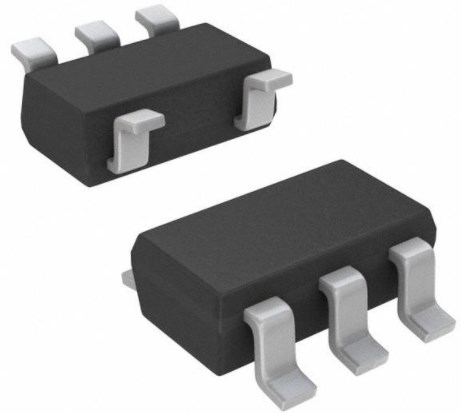 TLV70033DDCR: Low Quiescent, Pinout, Datasheet
TLV70033DDCR: Low Quiescent, Pinout, Datasheet09 March 20221490
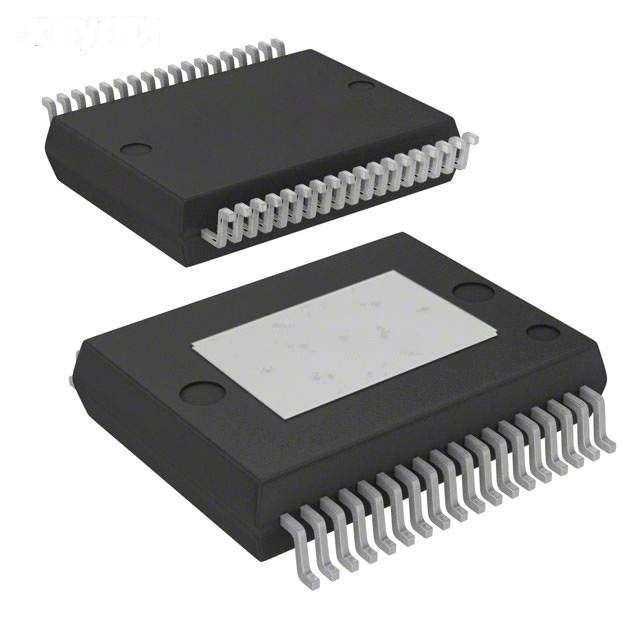 TDA7492 Amplifier: Pinout, Datasheet, and Block Diagram
TDA7492 Amplifier: Pinout, Datasheet, and Block Diagram07 July 20216150
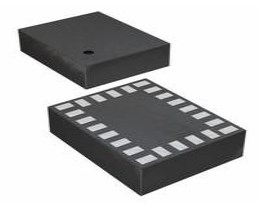 LSM9DS1TR Gyroscope Magnetometer 9 Axis Sensor I²C SPI Output: Datasheet, Features, and Pinout
LSM9DS1TR Gyroscope Magnetometer 9 Axis Sensor I²C SPI Output: Datasheet, Features, and Pinout07 April 20222278
 Basic Understanding of Attenuators
Basic Understanding of Attenuators15 September 202016212
 What Sensors are Used in Industrial Robots?
What Sensors are Used in Industrial Robots?09 November 20215495
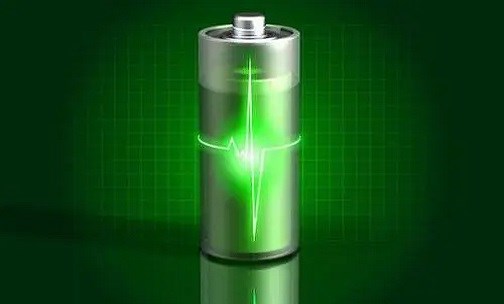 4680 Battery - Upgrade of Battery Technology
4680 Battery - Upgrade of Battery Technology17 December 20215209
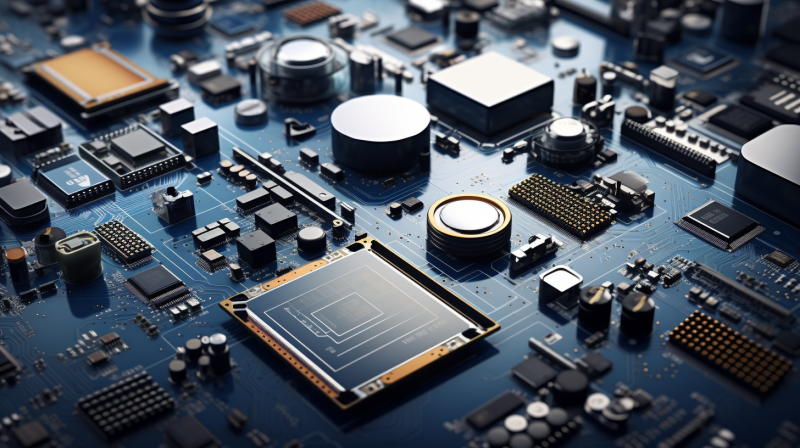 Semiconductor Market Predicted to Witness Significant Growth by 2023
Semiconductor Market Predicted to Witness Significant Growth by 202319 September 20231784
 RGB LED: Circuit, Difference and Application
RGB LED: Circuit, Difference and Application25 March 20215526
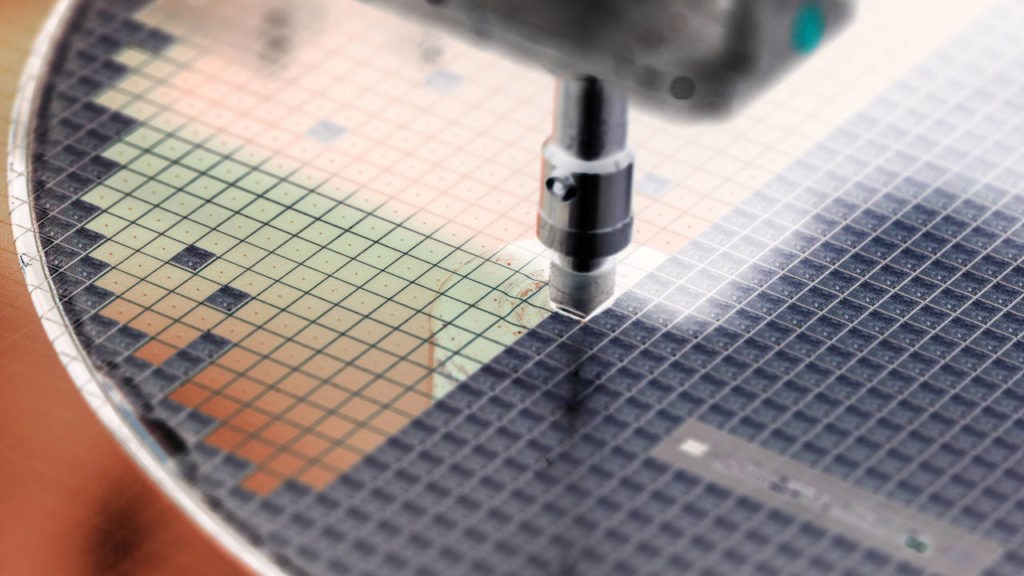 Real-time Cloud Analytics in Semiconductor Manufacturing
Real-time Cloud Analytics in Semiconductor Manufacturing01 November 20221146
 Revolutionizing Semiconductor Manufacturing with New Plasma Power Technologies
Revolutionizing Semiconductor Manufacturing with New Plasma Power Technologies23 September 2023711
 Getting Started with Arduino: What is Arduino and How to Use Arduino Boards
Getting Started with Arduino: What is Arduino and How to Use Arduino Boards28 September 20234386
Linear Technology/Analog Devices
In Stock: 2480
Minimum: 1 Multiples: 1
Qty
Unit Price
Ext Price
1
$329.572519
$329.57
10
$310.917471
$3,109.17
100
$293.318369
$29,331.84
500
$276.715442
$138,357.72
1000
$261.052304
$261,052.30
Not the price you want? Send RFQ Now and we'll contact you ASAP.
Inquire for More Quantity










